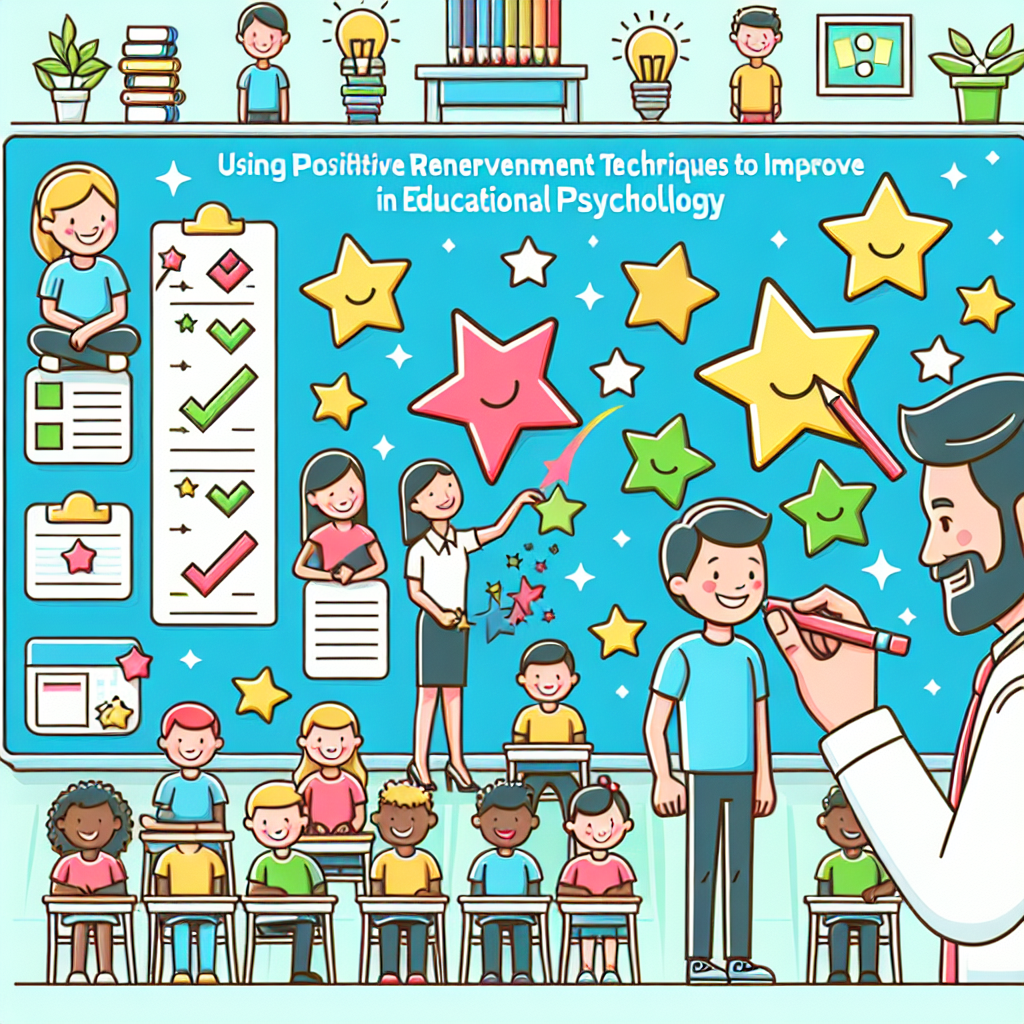Educational Psychology is a field of study that focuses on understanding how students learn and develop in educational settings. One of the key aspects of educational psychology is classroom management, which is the process of creating a positive and structured learning environment that promotes student engagement and success. Positive reinforcement techniques are a powerful tool that can be used to improve classroom behavior and enhance student learning outcomes.
Positive reinforcement is a concept that was first introduced by psychologist B.F. Skinner in the 1930s. It involves rewarding students for demonstrating desired behaviors, such as completing assignments on time, participating in class discussions, and treating their peers with respect. By using positive reinforcement techniques, educators can effectively encourage and motivate students to exhibit these behaviors consistently.
There are several strategies that educators can use to incorporate positive reinforcement techniques into their classroom management practices. One of the most common methods is to provide verbal praise and recognition to students when they demonstrate desirable behaviors. For example, a teacher might say “Great job completing your homework on time, Sarah!” to acknowledge and reinforce Sarah’s responsible behavior.
Another effective strategy is to offer tangible rewards, such as stickers, certificates, or small prizes, as a way of recognizing and reinforcing positive behaviors. These rewards can serve as powerful motivators for students and can help to reinforce the connection between their actions and the positive outcomes they experience.
In addition to providing verbal praise and tangible rewards, educators can also use social reinforcement techniques to promote positive behavior in the classroom. This involves using social cues, such as smiles, nods, and thumbs up gestures, to signal approval and recognition of students’ good behavior. By using social reinforcement techniques, educators can create a positive and supportive classroom culture that encourages students to engage and participate actively in their learning.
Overall, positive reinforcement techniques can be highly effective in improving classroom behavior and promoting a positive learning environment. By consistently using these techniques, educators can help students develop self-regulation skills, build confidence in their abilities, and establish positive relationships with their peers and teachers.
FAQs:
1. How do I determine which behaviors to reinforce with positive reinforcement techniques?
When deciding which behaviors to reinforce, it is important to focus on behaviors that are conducive to a positive learning environment and that reflect the values and expectations of your classroom. Consider the goals you have for your students and the behaviors that will help them achieve those goals.
2. What are some common mistakes to avoid when using positive reinforcement techniques in the classroom?
One common mistake to avoid is using positive reinforcement inconsistently or only when a student misbehaves. It is important to provide positive reinforcement consistently and to reinforce a variety of desirable behaviors, not just those that are related to discipline.
3. How can I ensure that positive reinforcement techniques are effective in improving classroom behavior?
To ensure that positive reinforcement techniques are effective, it is important to provide frequent and immediate feedback to students when they exhibit desirable behaviors. Be specific in your praise and reinforcement, and make sure that students understand the connection between their actions and the rewards they receive.
In conclusion, positive reinforcement techniques can be a powerful tool for improving classroom behavior and fostering a positive learning environment. By using these techniques consistently and effectively, educators can help students develop the skills and attitudes they need to succeed academically and socially.




Leave A Comment